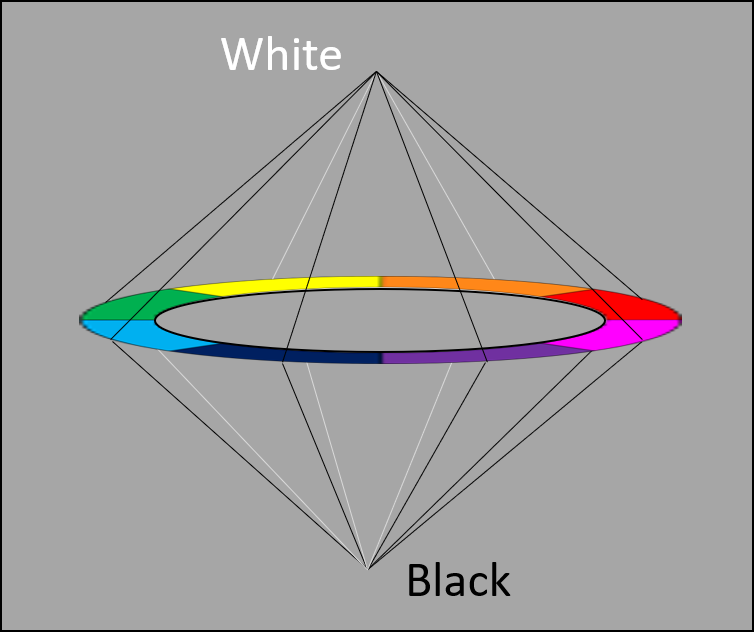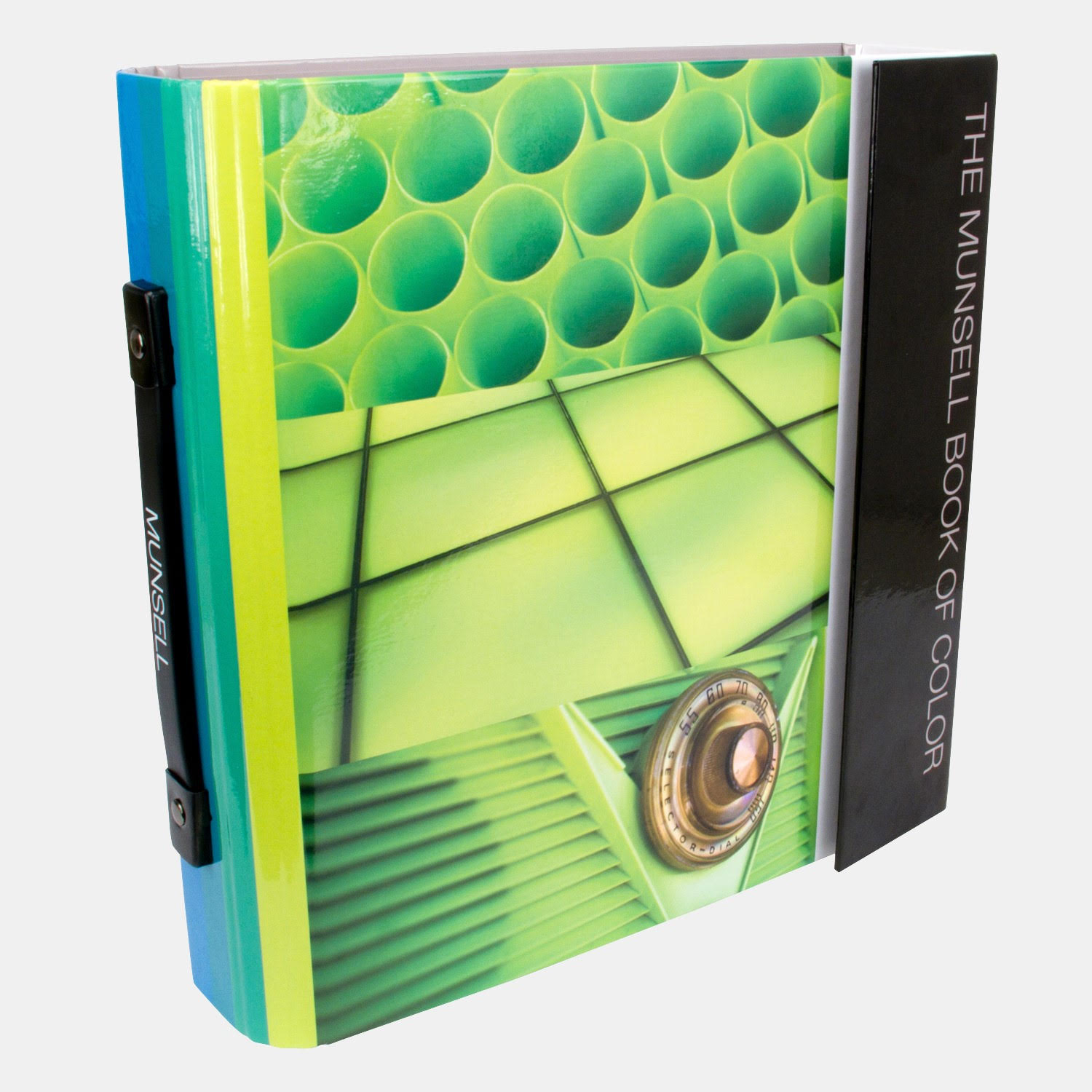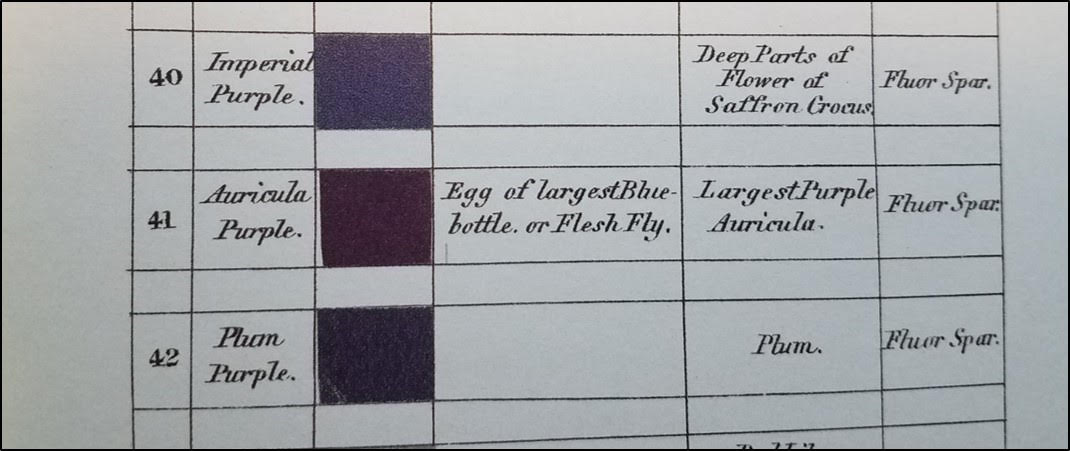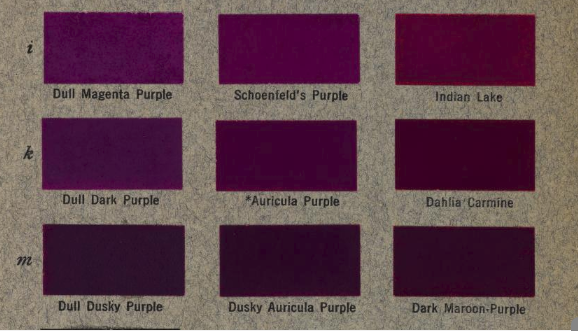In the previous set of blog posts from “John the Math Guy”, crayons were used to demonstrate that color is three-dimensional (Managing Color in Crayon Space), and that the three dimensions of color space are hue angle, lightness value, and chroma/saturation (Crayon Space and Three Attributes of Color). I wish I could take credit for coming up with that idea. Unfortunately for me, the idea of a three-dimensional color space goes back To Albert Munsell in his 1905 runaway best-seller A Color Notation.
Actually, you’re wrong, John. The first three-dimensional arrangement of color was envisioned by Robert Grosseteste in 1230. His color space was something like the set of cones shown below. Other three-dimensional color spaces were developed by Johann Heinrich Lambert (1772), Tobias Mayer (1775), Philipp Otto Runge (1810), Michel Eugene Chevreul (1839), William Benson (1868), Wilhelm von Bezold (1874), and Wilhelm Wundt (also in 1874). These color spaces were in the shape of spheres, cubes, triangular prisms, or triangular pyramids. Perhaps in your senility you have forgotten one of your own blogs posts: Munsell – the Father of Color Science? (part 2)?

The grossest color space ever!
I apologize for the interruption by my arch nemesis, Joan the Moth Gal. She thinks she knows everything!
I concede that Albert Munsell didn’t invent the first three-dimensional color space. But he did something even better. He published the Atlas of the Munsell Color System (1913), which had page after page of color chips, each given a designation based on hue, value, and chroma. This was the first standardized way for unambiguously communicating color.
With this book, it became possible for a color buyer to specify color to a manufacturer. For example, if I want some cloth dyed, I can give the hue, value, and chroma that I want, based on my looking through my copy of the Color Atlas. The dyeing house can also buy that book, and will know exactly the color that I want. The fact that you can still buy this book shows that this book was and is truly useful.

If you do printing for me, you will need this book as a reference!
Useful, yes. But alas, John, the Munsell color atlas was not the first attempt at using color chips to standardize color communication.
The mineralogist Abraham Gottlob Werner is credited with a compendium of colors in 1812. This was expanded on by Robert Jameson, and further augmented and published by Patrick Syme in 1821. Werner’s Nomenclature of Colors standardizes color names like “41. Auricula Purple”, which is “plum purple, with indigo blue and much carmine red”. One can find this color in nature as “the egg of the largest bluebottle or flesh fly” or the “largest purple auricula” (which is an Alpine primrose). Purple auricula also can be seen as one of the colors of the mineral fluorspar. (Doncha love that color name? Say it with me. Auricula.)

Page from Werner’s Nomenclature of Colors
And Werner was not the only author of a color dictionary. Robert Ridgway published two such books to standardize color naming for ornithologists called “A Nomenclature of Colors for Naturalists” in 1886, and the blockbuster sequel “Color Standards and Color Nomenclature” in 1912. The lack of technicolor film at the time explains why the movie was panned by critics.
Ridgway’s book predates Munsell’s Atlas by one year. A digital copy of Ridgway’s book is available on Archive.org.

Ridgway’s oracular version of Auricula purple
If I may go even further, the books by Werner and Ridgway were not the first books that visually standardized the communication of color. Johann Ferdinand Ritter von Schönfeld published the “Wiener Farbenkabinet” (The Viennese Color Collection) in 1794. That book was seriously predated by a book called “Traité des couleurs servant à la peinture à l’eau” (Color Treatments for Water Painting) by the obscure Dutch artist A. Boogert. The book has 800 pages of meticulously mixed watercolors. The only known copy of this book was created in 1692.
So, no, John. Albert Munsell did not publish the first color atlas.
See what I mean when I say that Joan is a know-it-all? Ok, well, be that as it may, Albert Munsell was the first person a) to define a three-dimensional color space with b) three intuitive attributes of color: hue, value, and tint, and also c) to produce a commercially available physical standard that one could use to communicate color.
Technically, you are correct, John. But, remember the 1912 book from Ridgway? It a) represented a three-dimensional color space, and c) it was commercially available. Did it have b) three intuitive axes you ask?
In the color space that Ridgway’s book was designed around:
Attribute 1: Each color has a hue number from 1 (red) to orange (11), etc., up to 72 (violet red-red). That’s one of the three attributes, and I would say that this attribute is intuitive.
Attribute 2: Each color has a position on the tone scale that goes from white to the full color to black. The first half of the tone scale includes the tints of any given hue, which are labelled: full color, a, b, … g, and finally white. The second half is the shades of that hue which are labelled full color, h, i, … n, and black. I think the arrangement of colors is intuitive, except that the way that the letters are arranged is a bit screwy.

The color Grenadine Red was named after the French word for pomegranate, which is grenade. The French word for grenade is also grenade. When in France, one must be careful when ordering a pomegranate.
Attribute 3: Each color has a grayness associated with it. In the notation, the grayness is indicated by the number of single quotes that follow the hue number. A pure color has no single quotes. A color that is almost pure neutral gray has five single quotes. Neutral gray (for some reason) has no single quotes.
Ridgway’s three attributes can be combined to uniquely define any color. Our good friend Auricular purple is designated 69’ k. Thus, it is a slightly gray (one single quote) dark shade (k) of the hue red-violet red, which is hue 69.
So, yeah. I guess you got me on the intuitive thing.
The Munsell color system was the first three-dimensional color system that was intuitive and which had a physical standard. Those are the reasons why it became the cornerstone of modern color measurement.
John Seymour is a consultant in color science and mathematical algorithm development. He is also the Vice President of Papers for the Technical Association of the Graphic Arts, and a member of the Committee for Graphic Arts Technologies Standards, and ISO TC 130. Find him on LinkedIn.
